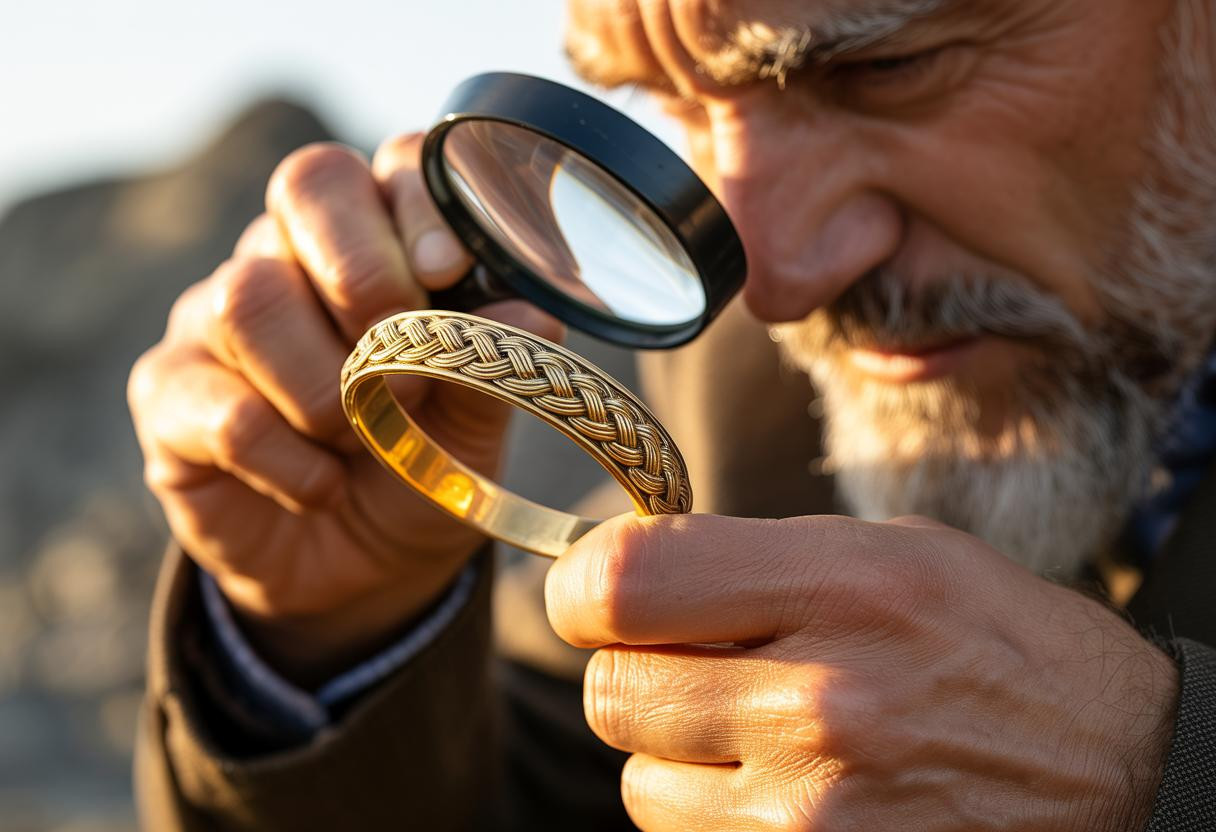A 1,000-year-old Viking gold arm-ring discovered just miles from the deadliest motorsport circuit in the world reveals extraordinary craftsmanship that modern engineers would struggle to replicate. The 27.26-gram fragment showcases an eight-rod plaiting technique so intricate that archaeologists believe only master goldsmiths possessed the skills to create it.
Ancient treasure emerges from Isle of Man soil
Metal detectorist Ronald Clucas made the discovery in spring 2025, uncovering what experts now confirm as a folded fragment measuring 3.7 centimeters from an originally 7.7-centimeter arm-ring. Dating to AD 1000-1100, this artifact represents the pinnacle of Viking-era metallurgy during the height of Norse influence on the strategically positioned Isle of Man.
The island served as a crucial maritime hub connecting Scandinavia, Ireland, and Britain. Vikings established settlements here around 798 AD, transforming it into a thriving trade center that controlled western sea routes for centuries.
Revolutionary craftsmanship technique defies modern understanding
Eight-rod plaiting mastery challenges contemporary skills
The arm-ring’s construction involves eight individual gold rods twisted into complex patterns requiring unprecedented precision. This technique demanded specialized tools including iron anvils, wire-drawing blocks, and controlled annealing processes that few modern artisans could replicate without extensive training.
Unlike simpler twisted Viking jewelry found elsewhere, this piece demonstrates the Isle of Man’s connection to elite metalworking networks spanning the North Atlantic. The precision required mirrors precision and strategy in extreme conditions that characterizes both ancient craftsmanship and modern high-stakes activities.
Status symbol reveals wealth beyond imagination
Viking arm-rings functioned as currency, status markers, and ritual objects simultaneously. The ornate design suggests its owner belonged to the island’s ruling elite, possibly controlling maritime trade routes or governing Norse settlements. The artifact’s intentional folding indicates either concealment during conflict or fragmentation for economic transactions.
Hidden connections between ancient routes and modern circuits
The discovery’s proximity to the Isle of Man TT circuit creates a fascinating historical parallel. Just as Vikings navigated treacherous sea routes with calculated precision, modern riders tackle the island’s challenging roads with similar determination and skill.
This connection extends beyond symbolism into cultural psychology. Archaeological sites like this attract visitors interested in dark tourism and heritage sites, where historical significance intersects with human fascination for dangerous pursuits and ancient mysteries.
Practical implications for modern archaeology
Metal detecting revolutionizes discovery methods
Clucas’s find demonstrates how collaborative archaeology between hobbyists and professionals expands our historical understanding. The Manx Detectorist Society’s partnership with heritage organizations proves that significant discoveries don’t require massive institutional funding.
Technology gaps reveal research opportunities
Current analysis lacks crucial metallurgical composition data. XRF analysis could reveal gold purity levels and trace elements indicating the metal’s geographic origins. Isotopic studies might connect this artifact to specific European gold sources, mapping Viking trade networks with unprecedented accuracy.
Future discoveries await beneath Manx soil
The arm-ring’s exhibition at the Manx Museum’s Viking Gallery represents just the beginning. Archaeologists predict that systematic exploration around the discovery site could reveal additional artifacts, potentially uncovering an undisturbed Viking settlement that would revolutionize our understanding of Norse influence in the Irish Sea region.
This single golden fragment proves that beneath our feet lie countless stories waiting to rewrite history books, connecting ancient maritime adventures to the modern world in ways we’re only beginning to understand.
